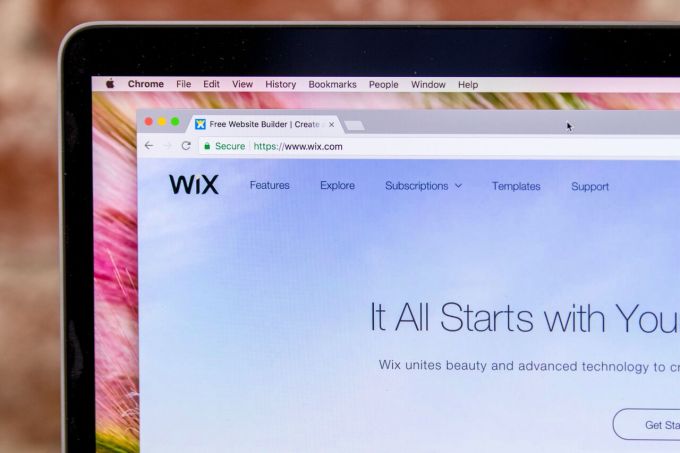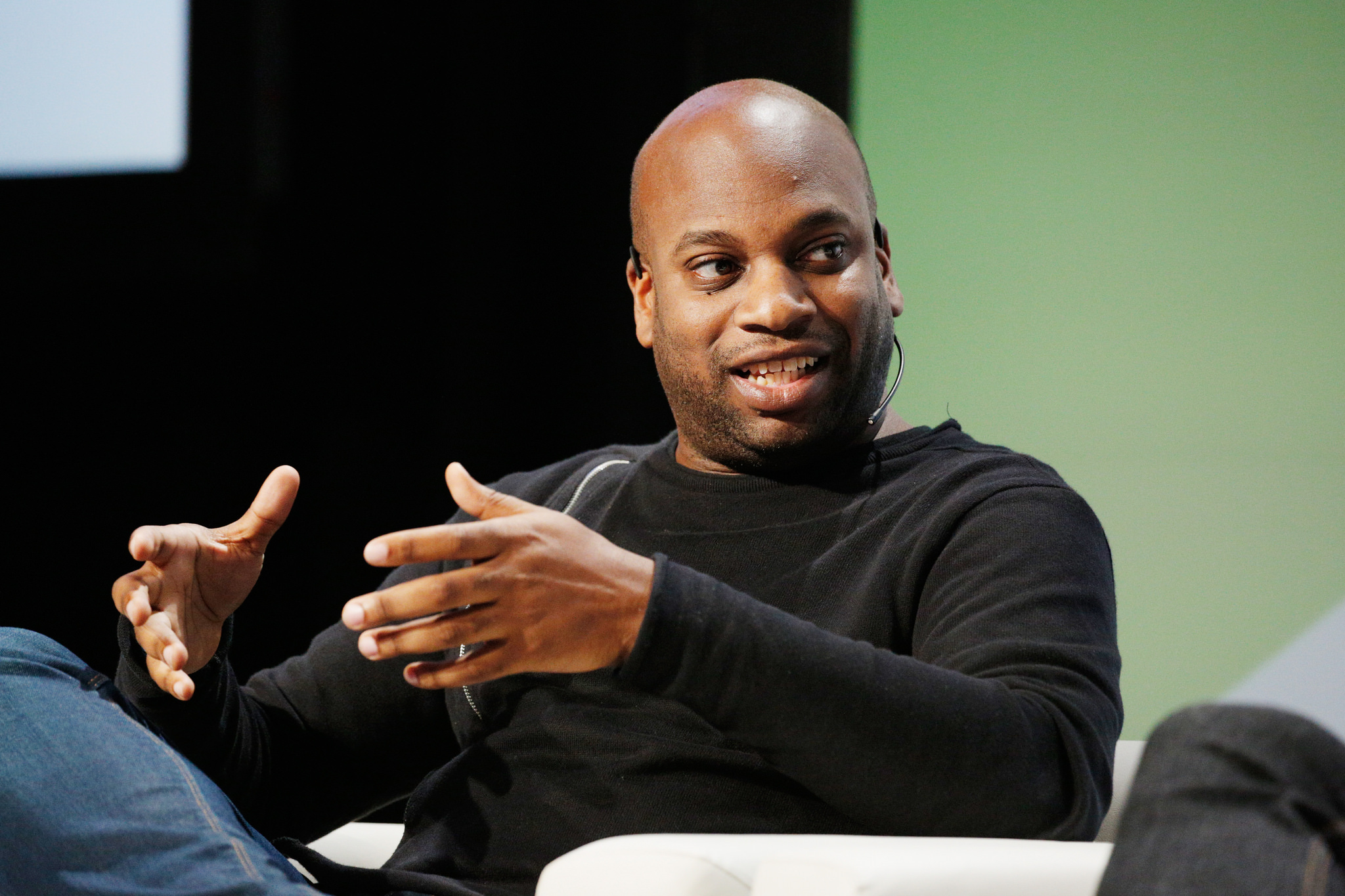Apple launched new iOS 12 features two weeks ago and changes keep coming with iOS 12.1 beta. It's a big shift for your iPhone and iPad we recommend downloading, even if there are some iOS 12 problems.
What's in the iOS 12 update? The features list includes Memoji, Grouped Notification, Screen Time and, importantly, better performance for older iPhones. iOS 12.1 adds Group FaceTime, live bokeh photo adjustments, and new eSIM support.
Best of all, you don't need the pricey iPhone XS or XS Max to get iOS 12. In fact, the software update makes your old iPhone and iPad feel like new. We have a how to download iOS 12 guide in case you're looking to update still. or want iOS 12.1
Good news: perks like Group Notifications make the UI easier to navigate and Siri Shortcuts will save you time. Bad news: Group FaceTime was delayed to iOS 12.1, and isn't expected to launch until October, maybe with iPhone XR on October 26.
Apple has made its mobile operating system and competitive in the wake of Google's Android Pie update and impending Google Pixel 3 launch. Here's what you need to know about iOS 12, whether you're upgrade an older iPhone or getting it out of the box with iPhone XS Max.
What's the difference between the latest phones showcasing iOS? Watch our handy explainer to find out:
Here's what is in the iOS 12.1 update
- Group FaceTime for up to 32 users is part of the iOS 12.1 beta
- Adjust photo background blur (bokeh) in real time (not just afterward)
- eSIM support menus are live in the beta – but carrier support is needed
- References 'iPadfall2018' – a big iPad Pro 2018 hint
The iOS 12.1 release date is expected in October, and it could very well launch at the same time at iPhone XR on October 23. Until, then iOS 12.1 beta is out for both developers and the general public.
There are four important iOS 12.1 changes:
First, Group FaceTime for up to 32 users is here. To test it out, however, you're going to have to pair up with people who have iOS 12.1 beta, so its use cases are limited right now.
Second, Apple expanded upon the bokeh (blur) adjustments you can on an iPhone XS and iPhone XS Max in portrait mode. Before you could adjust the blur in post, meaning after a picture was taken. Now, with iOS 12.1, you can also adjust the blur in real-time, as you're snapping a photo. This helps you better frame portrait photos.
Third, eSIM iPhone support is live with the proper setup menus. But there's a catch for setting up the simulated dual-SIM. You'll have to wait for your carrier to start supporting the feature. That may come about on the official iOS 12.1 release date.
Third, and even more interesting, the iOS 12.1 code references 'iPad2018fall'. We're likely to see the iPad Pro 2018 launch in October. New iPad Pro rumors point to a bezel-reduced iPad, one with a TrueDepth camera for Face ID and Memoji. There are plenty of hints in iOS 12.1 that Animoji and Memoji are going to be supersized on Apple's tablet soon.
The top iOS 12 features
1. iOS 12 makes your old iPhone and iPad faster
- Older iPhones are 40% to 70% faster at certain tasks
- Apple's looking to put the problematic iOS 11 behind it
iOS 12 focuses on reliability and performance with this update, and it supports all of the same iPhones and iPads that iOS 11 worked with.
Apple calls out the iPhone 6 Plus, specifically, saying iOS 12 makes this phone 40% faster at launching apps, 70% faster at launching the camera app, and 50% faster at displaying the keyboard. Keyboard typing and other routine features on older iPhones can slow down with every new iOS update, and Apple is looking to change these pain points with iOS 12.
This makes your existing iPhone and iPad more reliable, and your older devices can be used by family members or be sold now that they'll be more function with iOS 12. They don't have to sit in a drawer because they're too slow.

2. Grouped notifications
- Grouped notification on iOS 12 clean up individual notifications mess
- Smartly grouped by app, topic, thread. Tap in to look to unbind them
- Can clear a whole group of notifications with a single swipe
Grouped notifications are a part of iOS 12. This is a small, but very important tweak (maybe the most important in the iOS 12 update) because it changes the lock screen alerts you see each and every day.
It binds together notifications by message threads and topics, making it easier to see everything at a glance. Right now, individual notifications in the morning are a big pain to check as they pile up.
3. Memoji and changes to Animoji
- Personalized 'Memoji' to look like you or 'the real you'
- Four new Animoji masks: Ghost, Koala, Tiger and T-Rex
- Animoji and Memoji clips last 30 seconds (up to 10 seconds)
- Tongue and wink detection for iOS 12 masks
Memoji is a customizable mask that can look like you – or the real you, according to Apple. It still resides in Messages. You can select hairstyles, eye color and accessories like earrings and sunglasses.
Like Animoji, this is a feature for newer iPhones in the X lineup due to requiring Apple's TrueDepth front-facing camera.
Animoji is expanded, not just with new masks, but with tongue detection and wink detection. Ghost, Koala, Tiger, and T-Rex will be joining the cast of Animoji masks.
4. iOS 12 allows for more than one Face ID face
Face ID on iOS 12 supports more than one face within the Setting menu labeled 'Face ID & Passcode.' Look for the 'Set up an Alternative Appearance' sub-menu to add a second look.
This is helpful for two reasons: You can either allow a partner to have access to your iPhone or iPad with Face ID, or you can add your alter ego to make sure Face ID unlocks your phone no matter what you look like today, tomorrow or the next day.

5. Siri Shortcuts can find your lost keys, more
- Siri Shortcuts allows you to assign phrases to tasks
- 'I lost my keys' can ring your Tile tracker to find keys
- 'Heading home' sends ETA notification to roommate, sets thermostat and fan, and brings up the fastest route via Apple Maps
- Gallery and library full of pre-configured Siri Shortcuts
Siri is smarter. If you set up Siri Shortcuts, a brand new app, It‘ll know that “I lost my keys” means to ring your Tile tracker.
Sure, Tile is a handy gadget, but getting to the slow app is a pain when you've lost your keys. An integrated Siri is a game-changer for both Tile and our peace of mind.
Siri Shortcuts go far beyond this example. Apple allows for all sorts of formulas. The app can suggests coffee orders from the place you always order from, and nudge you to message contacts to tell them you're running late.
There's also Kayak-based flight information you can call up via voice. By pressing the add to Siri button, you can then say “Travel plans” and Siri will read back information such as your hotel address.
Apple's IFTTT-like Siri Shortcuts app launched alongside the final iOS 12 software. However, not all shortcuts will be found in the new app. Some companies, like the aforementioned Tile, will host shortcuts within their own app, so look out for that.
6. Group FaceTime (now launching later)
- Group FaceTime for up to 32 people with dynamic UI
- Can use Animoji and Memoji in FaceTime
- Won't launch with the final software on day one
Group FaceTime is coming to iOS 12 with up to 32 participants, and you go directly from a group chat to a group FaceTime in the Messages app.
Update: Apple has delayed the launch of iOS 12 Group Notifications, according to release notes indicating that it'll come out this 'fall'. To us, that sounds like an iOS 12.1 launch – like Apple Pay, Apple Cash, AirPlay 2 and other features didn't make it live on day one in previous operating system updates.
People can drop in and drop out at any time. The interface is filled with tiles that can expand, and 'the roster' along the bottom for everyone else in the Group FaceTime chat. When people start to speak, their window gets bigger, even if they're in the bottom roster of participants. It works on iPhone, iPad and Mac, and you can even answer on the Apple Watch and HomePod with just audio.
Animoji is coming to FaceTime and Group FaceTime. You'll of course need to update to iOS 12 and an iPhone X, iPhone XS, iPhone XS Max or an iPhone XR to make that magic happen.

7. Screen time – using your iPhone less
- Reports give a weekly activity summary on how you use iOS 12
- Breakdown: ranks app usage, highest phone pick up times (and what app draws you in first), and apps that send you the most notifications
- Set self-imposed time limits via reminders and temporary app blocking
- Limit kids time in apps by category or individual apps via Family Sharing
Screen time is Apple's way of limiting your iPhone usage – calculating how much time you're spending on apps, which apps you use the most, and which apps are sending you the most notifications. Screen time doesn't lie.
For those without self-control, Apple has created app limits. You can set your own limit, with a notification letting you know when time is almost up. A 'Time is up' message will display when you've reached your self-imposed-Siri-assisted limit.
Parents can create limits for kids with Allowances, time-of-day-based downtime controls, and category controls. Education and essential message apps can also be greenlit thanks to an always-allowed settings.
The best part? Setting limits for your kids uses Family Sharing, so you can manage it all remotely from your parental device – no need to get hold of your 12-year-old kid's phone to execute on these new iOS 12 controls.

8. Do Not Disturb goes visual in iOS 12
- Do Not Disturb during bedtime to hide visual display of notifications
- It offers a clean lock screen with only a reminder than DND mode is on
Apple has expanding its Do Not Disturb capabilities with a cleaner 'Do Not Disturb During Bedtime' mode. It'll silence not just the notification delivery sounds, but also the visual notifications clutter that can distract you when you're trying to sleep.
The lock screen remains clear until you unlock your iPhone in the morning. You can allow certain apps to break through, just like with DND mode right now. Apple refers to these as critical alerts, and they're opt-in.
We really like the solo DND notification hanging out on the lock screen. It's peaceful without distracting visual clutter at night and it reminds us that DND mode is on. All notched iPhones don't have the DND icon at the top, so it was always hard to tell before iOS 12.

9. Instant Tuning for axing notifications
- Instant Tuning to send future notifications silently or turn them off
- Siri can suggest which notifications to silence based on usage
Instant Tuning is an iOS 12 feature you'll love if you've ever gotten a notification from an app you always seem to dismiss (HQ trivia, breaking news alerts, etc), but don't have time to turn off future notifications in the many submenus of Settings. Apple is allowing you to control individual app notification profiles right from the lockscreen, without making you leave what you're doing.
Deliver Quietly is an option within Instant Tuning, and it'll allow you to choose to have notifications delivered silently Notification Center by default so you’re not interrupted by alerts on the lockscreen. It's a nice in between option.
Siri helps clean up your messy lock screen with notification delivery suggestions based on how you interact with notifications. Siri will understand which notifications it should deliver prominently and which ones to send to Notification Center. It's like iOS 12's version of 'clean up your desktop' system nudges.

10. New 'Measure' app and USDZ file format
- New USDZ file type dedicated at augmented reality
- Measure app replaces your old-fashioned measuring tape
'Measure' is getting its own AR app. It uses the iPhone's and iPad's sensors to measure objects in front of you, including suitcases, as shown in the first iOS 12 demo. All it takes it just tap-and-drag along the edges of the object on the screen.
It also automatically detects the approximate dimensions of a photo – we've used it to buy a photo frame when we couldn't find the old-fashioned tape measure. iOS 12 to the rescue.
For AR developers, Apple has created a new file type called 'USDZ.' The company worked on USDZ with Pixar, and Adobe is supporting it, too. The file format can be shared across FIles, Mail, Messages and Safari. This is an important step forward for developers working on AR apps.
11. Apple News, Stocks, Voice Memos and CarPlay
- Apple News: new Browse tab and sidebar navigation
- Stocks: robust chart design and stock news integration
- Voice memos: easier menus, iCloud support, on iPad (finally)
- CarPlay: third-party app support, like Google News and Waze
Apps are indeed getting updates with iOS 12, starting with Apple News. There’s a new Browse tab and a sidebar for better navigation. Stocks is finally being rebuilt with a helpful news design, complete with charts and Apple news headline integrated into into stocks. The top stories will be business news curated by Apple News editors.

Voice Memos has come to iPad (as well as macOS), and it’ll get iCloud support, long overdue changes. Now you won't have to AirDrop conversations between devices in order to listen back. It'll also be easier to assign names to voice clips thanks to an overhauled Voice Memos redesign.
Apple Books is the new name for iBooks, allowing you to pick up reading where you left off and a new store interface to browse buy ebooks and audio books.
CarPlay now support third-party applications, with Waze and Google Maps appearing on-screen. Apple didn’t call out the Google-owned apps by name, but they were there on the screen. This was a major highlight of iOS 12.
12. Some NFC features work even with a dead battery
Apple delivers a clever trick with NFC, allowing you to use a metro pass or student ID in the Wallet app, even if your iPhone has a depleted battery.
Express Cards with power reserve ensures you're not stranded outside of a train station or a dorm room because there's still some low-level power in your phone. This is one of our biggest fears for users who routinely rly on NFC.
Apple solves this, and though there's not enough power to give you visual feedback, when you touch your dead iPhone to an NFC-equipped terminal and you'll get a haptic response. And like magic, it works.
Just don't expect this new feature to work with Apple Pay. That requires Face ID, so you're going to have to possess a powered-on smartphone for that to work.

13. Closing apps in multitasking mode is easier
For 12 and 13, iOS 12 fixes some irksome features we hated about iOS 11. They're the kind of problems only first-year iPhone X users will know about.
Closing open app windows in iOS 12 is easier. All you have to do is slide up on an open app to dismiss it from the multitasking menu. iOS 11 had us press down on the app until a bunch of red close icons appeared over top of each app, and then to tap those little red icons to dismiss the app. That was unpleasant.
14. Accidental screenshots are less common
Whenever we picked up our iPhone X, we'd always press the volume up and power button accidentally, which is the new 'take a screenshot' button combination on iPhone X. Apple has disabled this action whenever the phone screen is off. Our iOS 12 Photos app is no longer going to be filled with errant screenshots on the daily.
15. ARKit 2 and multiplayer gaming
- ARKit 2 allows for 'shared experiences' for AR multiplayer
- Lego, Fender, Adobe and Pixar are all working on AR with Apple
iOS 12 cements Apple as a leader in augmented reality (AR) with the arrival of groundbreaking multiplayer capabilities it calls Shared Experiences in ARKit 2.
These multi-user virtual environments allow for multiplayer gaming and experiences through iPhones and iPads. iOS 12 creates a more collaborative (and competitive) way of experiencing AR.
Lego demoed a four-player game at WWDC in June, pledging that it was in when it came to Apple's “creative play possibilities.” Players were involved in building up an AR town. It was like The Sims was reimagined for the future.
ARKit 2 opens up AR to hundreds of millions of users, according to Apple, and that makes iOS 12 the broadest AR platform in the world. We got a taste of AR last year, but multi-user virtual environments bring more advanced tools and gameplay.

16. Camera app changes
Smart DHR is reserved for the A12 chip-equipped iPhone XS and iPhone XR phones, but iOS 12 also tweaks the default camera app on older devices with new tricks.
First, the Portrait Lighting mode (on newer iPhones with dual-lens cameras) looks more natural. The software will be able to define crisper edges by more effectively separating a person from a background scene. Apple is also allowing third-party apps to use the software to separate the foreground and background.
Second, it's the end of an era for our how to scan a QR code from your iPhone and iPad guide. The default camera in iOS 12 makes QR code reading automatic.
Third, while not part of the camera app, RAW photos can be imported and managed on an iPhone and iPad, with the bonus ability of editing RAW photos on an iPad Pro.

17. Photos app is now smarter with iOS 12
- Betters search and a new 'For you' tab
- Suggestions on who to share photo collections with
- Share back suggestions nudge friends to send their photos
The Photos app expands its search capabilities in an effort to compete with Google Photos. It recognizes photos by event now and indexes them accordingly. Apple says it takes into account over four million events, citing the Aspen Ideas Festival as a very niche example.
This lets you search by event without any thankless manual tagging. Searching by event joins other smart suggestions, including filtering by people, places, and relative dates (searching via Siri works with all of these and is quite handy in our experience).
The iOS 12 Photos search capabilities have also been broadened to let you use multiple search terms at once. Seeking "dog, animal" should weed out all of your gourmet hotdog results (this is a real problem we just tested at TechRadar).
A new tab 'For you' is a part of the iOS 12 Photos app, and it's filled with personalized suggestions on how to improve and share your pictures. Sharing has gotten smarter, letting you share at full-resolution and suggesting who to share these photos with.
Share back suggestions is a neat feature that lets you send photos to a friend, and it uses machine learning to poke them to send photos they took to you. Bonus: iOS 12’s photo sharing features uses iMessage's end-to-end encryption.
18. iPad switches to iPhone-like gestures
It's confusing owning both an iPad and a new iPhone X right now because returning to the home screen and opening Control Center are executed by different gestures.
The iPad takes cues from the iPhone X with the iOS 12 update: swipe up from the bottom to return home and check Control Center by pulling down from the top right-hand corner.
This may be a prelude to the iPad Pro 2018 that's rumored to include Apple's TrueDepth camera for Face ID, Animoji, and Memoji.

19. Siri translates new languages, learns motorsport scores
- Siri can now translate over 40 language pairs
- Motorsports scores, schedules and stats knowledge
- Food and celebrity facts knowledge expanded upon
- Password search not part of Siri's duties in iOS 12
Try asking Siri to translate something into Spanish. It works, and with iOS 12 it'll be even more robust with over 40 language pairs to aid your international travels.
So far, Siri will translate English (US) into Brazilian Portuguese, French, German, Italian, Japanese, Mandarin Chinese, Russian and Spanish. We really hope Siri will be able to translate foreign words into English. That may have to wait for iOS 13.
Siri will also learn the language of motorsports, per se. Asking for Formula One and NASCAR information will have Siri recite live standings, schedule, roster and stat info.
Food knowledge and celebrity facts are also part the Siri update. Right now, asking "How healthy is fish" gives a smatter of search results and requires opening up Siri. In the future, a specific answers about food will come from the USDA database, citing calories, vitamins, and how healthy the food is overall.
Password hunting is now within Siri's grasp, letting you search any saved passwords, according to Apple. This applies to both apps and websites.
20. Pinpoints 911 calls in the US
You won't have to worry about reciting your exact location when calling 911 in the US thanks to iOS 12. It'll pinpoint your whereabouts during emergency calls.
Apple says it'll "automatically and securely" share your iPhone location with first responders, but only with them and only during such emergencies. It's an effort to reduce response time, yet maintain your privacy.
21. iOS 12 compatibility
- Compatible with iPhone 5S, iPad mini 2 and iPad Air and newer
- 11 iPhones, 10 iPads, 1 iPod touch – the broadest iOS update yet
iOS 12 will run on all devices that have its 64-bit chipset. It'll work on the iPhone 5S and newer, while the iPad Air and iPad mini 2 are the oldest iPads that are compatible with iOS 12.
That's means this update is supporting 11 different iPhones, 10 different iPads, and the sole iPod touch 6th generation, still clinging to life. It’s the broadest support for a software update Apple has ever offered, and this is one of the biggest advantages Apple has over Android phones.

22. Weather app warns unhealthy air quality
Apple's official weather app contains new messaging that indicates air quality in cities. This is where Sunny, Cloudy, and Partly Cloudy messaging usually sits. iOS 12 puts it in a spot where you'll see it more regularly, as opposed to a separate air quality app.
The forecast New York City as of writing this, for example, tells us that the area has 'Unhealthy Air Quality for Sensitive Groups'. People with asthma therefore may want to stay indoors.
When did iOS 12 launch?
- June 4 – Developer beta launched (to paid Apple Developers)
- June 25 – iOS 12 public beta launched (it's free)
- September 17 – the final iOS 12 software (still free)
iOS 12 released on Monday, September 17 following the iPhone XS launch event, where Apple announced the official launch date. You can now download it.
There were actually three phases to the iOS 12 launch: one for developers, one for public beta testers, and one final version launching in mid-September.
First, the developer beta launched at WWDC and got more frequent refreshes, but it was early software. You have to be a registered Apple developer, which costs $99 for the annual membership. It's for people who like to tinker with Xcode and make apps.
Second, iOS 12 public beta launched on June 25 and was completely free. It was less problematic than the developer beta. The downside? It was always one step behind what the developers have access to.
Third, the final software, meant for everyone, launched on September 17. There's no need to jump through hoops to enroll in a beta. iOS 12 is now here in its final form, right in time for the iPhone XS release date.
That's a wrap for new iOS 12 features.
The two biggest highlights were Grouped notifications and Group FaceTime with Memoji. Of course, Group FaceTime is not due to launch just yet, which means an inevitable iOS 12.1 and more updates for us to write about.
from TechRadar - All the latest technology news https://ift.tt/2sFS3nQ











0 coment�rios: